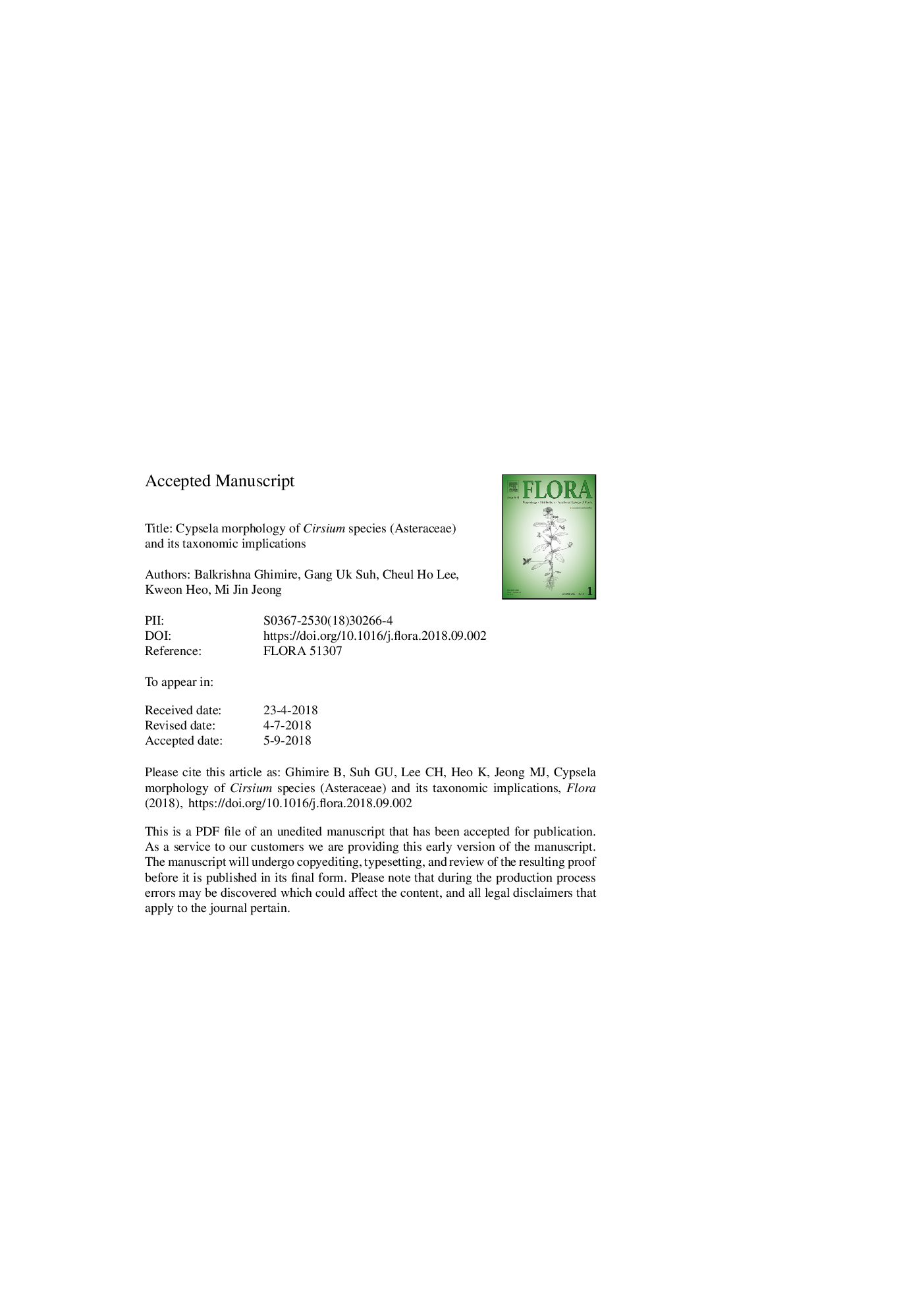| Article ID | Journal | Published Year | Pages | File Type |
|---|---|---|---|---|
| 11025882 | Flora - Morphology, Distribution, Functional Ecology of Plants | 2018 | 31 Pages |
Abstract
The cypsela morphology and anatomy of 15 species of Cirsium were investigated using scanning electron microscopy and light microscopy, with the aim of evaluating cypsela features for use in taxonomic studies. Considerable variation was observed in surface micromorphology and the anatomical characteristics of the pericarp and testa. Cypsela size and thickness of the pericarp and testa were categorized using biometric measurements. Multiple discriminant and cluster analyses were used to compare the morphology of cypselae among species. The distinguishing features were color, shape, size, pericarp and testa thickness, and microsculpture. Five basic surface types were identified: ribbed, scrobiculate-ribbed, scalariform, scrobiculate-reticulate, and irregular sulcate. Diagnostic anatomical traits comprised a few to multiple layers of pericarp overlain by a testa with a highly lignified epidermis and a crushed parenchymatous zone. The pericarp was usually distinct among the species investigated with the exception of C. setidens and C. linare, in which it has layers of crushed tissues. The endosperm was characterized by a single layer of cells overlying a massive embryo. ANOVA test showed significant differences among the investigated taxa (Pâ<â0.0001) and an UPGMA tree revealed two well differentiated clusters with a dissimilarity level of 25.0. Although the investigated specimens represent a limited range of taxa, the results of this study highlight the importance of cypsela features in assessing the taxonomic similarities between Cirsium species.
Related Topics
Life Sciences
Agricultural and Biological Sciences
Ecology, Evolution, Behavior and Systematics
Authors
Balkrishna Ghimire, Gang Uk Suh, Cheul Ho Lee, Kweon Heo, Mi Jin Jeong,
